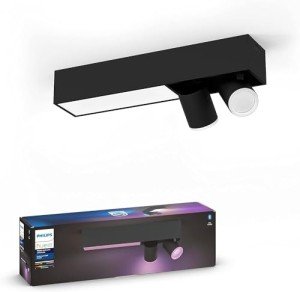15 Things You've Never Known About Contemporary Lighting UK

Contemporary Lighting in the UK: Transforming Spaces with Illumination
Lighting plays a vital function in defining the atmosphere and functionality of any area. In the UK, contemporary lighting has become a considerable style aspect, providing innovative options that mix aesthetics with practicality. This post explores the various styles, products, and technologies forming contemporary lighting, in addition to pointers for picking the most suitable fixtures for numerous settings.
The Evolution of Contemporary Lighting
Contemporary lighting in the UK reflects the altering tastes and technological developments in design. It encapsulates a large array of styles, consisting of:
- Minimalist: Characterized by simplicity and tidy lines, minimalist lighting fixtures focus on type and function without unnecessary decorations.
- Industrial: Inspired by city settings, industrial lighting integrates basic materials like metals and woods with vibrant styles, developing edgy, practical pieces.
- Scandinavian: Known for its heat and simplicity, Scandinavian lighting often features soft colors and natural materials, concentrating on developing a comfortable atmosphere.
- Smart Lighting: This modern pattern incorporates innovation with design, allowing users to control their lighting with mobile apps, voice commands, or automation systems.
To show the development and variety in the field of contemporary lighting, think about the table below, which highlights key characteristics of various designs.
| Design | Key Characteristics | Popular Materials | Suitable Spaces |
|---|---|---|---|
| Minimalist | Basic, practical designs | Metal, glass, wood | Modern homes, offices |
| Industrial | Raw, unfinished look | Steel, concrete, wood | Lofts, galleries |
| Scandinavian | Relaxing, warm aesthetic appeals | Natural fibers, light wood | Living rooms, cafes |
| Smart | Integrated innovation, automation | Varies widely | Residences, offices, retail areas |
Choosing Contemporary Lighting Fixtures
Choosing the ideal lighting fixtures for a space needs mindful consideration of a number of factors. Here are crucial components to bear in mind:
1. Purpose of the Space
Before choosing fixtures, think about the designated use of the area. Different functions require different kinds of lighting:
- Task Lighting: Focused illumination for activities such as reading, cooking, or studying. Examples consist of table lamps and under-cabinet lights.
- Ambient Lighting: General lighting that offers general lighting. Ceiling lights and pendant fixtures fall under this classification.
- Accent Lighting: Designed to highlight specific features or locations, such as artwork or architectural details. Wall sconces and mounted lights are common options.
2. Design and Theme
The lighting should match the existing design. Choose fixtures that match or boost the overall theme of the area, whether it's contemporary, rustic, or diverse.
3. Size and Scale
Consider the percentage of the lighting fixtures relative to the area. A big chandelier may look stunning above a roomy table, while smaller pendant lights work well in compact settings.
4. Energy Efficiency
With increasing energy expenses and ecological concerns, selecting energy-efficient lighting alternatives is essential. LED lights are an exceptional choice, providing longevity and lower energy intake.
5. Versatility
In modern design, adaptability is essential. Fixtures that can be changed or repositioned improve functionality, enabling users to produce various atmospheres as needed.
Popular Contemporary Lighting Brands in the UK
The contemporary lighting market in the UK boasts numerous brands known for their ingenious styles and quality craftsmanship. Some significant mentions consist of:
- FLOS: An Italian brand name celebrated for its creative and renowned light fixtures that frequently function as art pieces.
- Tom Dixon: A British designer acknowledged for his modern, industrial styles that wonderfully incorporate metal and light.
- Anglepoise: Known for its flexible, functional lamps, best for a range of settings from home workplaces to imaginative studios.
- John Lewis: Offers a variety of contemporary lighting solutions that deal with a broader audience, consisting of affordable yet elegant choices.
FAQs about Contemporary Lighting in the UK
1. What is contemporary lighting?
Contemporary lighting describes lighting designs and fixtures that show existing design trends, typically defined by tidy lines, ingenious shapes, and using modern materials and innovations.
2. How do I choose the best lighting for my home?
Consider the function of the room, existing design, size of fixtures, energy performance, and versatility. Evaluate how each piece will add to the general ambiance and performance of your space.
3. What are some energy-efficient lighting choices offered in the UK?
LED lights are the most prominent energy-efficient choice, understood for their long lifespan and low energy intake. Compact fluorescent lights (CFLs) and halogen bulbs are other options.
4. Where can I buy contemporary lighting in the UK?
Contemporary lighting can be discovered in different retail outlets, both online and in physical shops. Significant retailers include John Lewis, Habitat, and specialized lighting shops.
5. Can contemporary lighting work in traditional spaces?
Absolutely! please click the following internet page can improve traditional spaces when selected thoughtfully. Selecting fixtures with a balance in between modern and traditional components can create an unified style.
Contemporary lighting in the UK represents more than simply illumination; it embodies design innovation and imagination, transforming areas and boosting functionality. As trends continue to evolve, homeowners and designers alike can explore an expansive series of designs and innovations, ensuring that every room bursts with life, warmth, and character. By considering the vital elements outlined in this article, one can curate a collection of lighting fixtures that resonates with individual design and meets practical requirements, eventually forming comfortable and aesthetically appealing environments.

